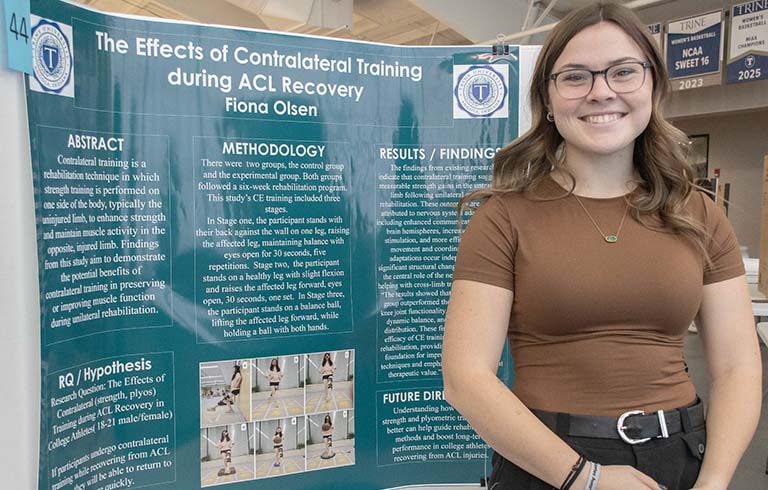Though many have already been awed by images of distant galaxies from the James Webb
Space Telescope (JWST), there is much the public doesn’t know about its capabilities.
A Trine University student and professor undertook a project to share more about the
telescope at this year’s NASA International Space Apps Challenge.
Held Oct. 1 and 2 at locations around the world, the Space Apps Challenge invited
members of the public from diverse backgrounds to work together to solve one of 22
challenges related to NASA’s mission.
Sean Davis, a junior from Kokomo, Indiana, majoring in software engineering, and Andrea
Mitofsky, Ph.D., professor in Trine’s Department of Electrical and Computer Engineering,
traveled to the NASA Glenn Research Center in Cleveland, Ohio, to participate in the event.
“I’ve never been to a hackathon before, so I jumped at this opportunity,” Davis said.
The two teamed with a student from Case Western Reserve University to work on the
challenge titled “Learning Through the Looking Glass,” which tasked participants with
building a game to help people learn about the capabilities of the James Webb Space
Telescope. The JWST is the largest, most powerful, most complex space science telescope
ever built, producing images that are sharper and more sensitive than those from prior
telescopes.
The group’s project, titled “Geyser of Galaxies,” won second place at the Cleveland
event.
“We approached the challenge with the main question of ‘What’s the best way we could
show off the capabilities of the James Webb Space Telescope with the widest reach?’
” Davis said. “Our team landed on a space exploration game where we could explore
different galaxies while also learning about what they are. The game is a solid base
that could be expanded to showcase more pictures of space objects that were taken
by the James Webb Space Telescope.”
“We learned a lot about how to access raw data from the James Webb Space Telescope
and the process of getting a game prototype running in a weekend,” he added.
Learn more about the project at 2022.spaceappschallenge.org/challenges/2022-challenges/through-the-looking-glass/teams/geyser-of-galaxies/project
Trine University also served as a funding partner for the Cleveland event.
First held in 2012, the NASA International Space Apps Challenge serves as innovation
incubation and civic engagement program. The 2021 Space Apps Challenge included more
than 28,000 registrants, spanning 162 countries and territories. Using open data from
NASA and its nine partner space agencies, they produced 2,814 projects.
Photo: Trine University student Sean Davis, left, works on the "Geyser of Galaxies" project
during the NASA International Space Apps Challenge, held Oct. 1 and 2.
Last Updated: 10/11/2022



